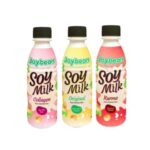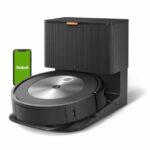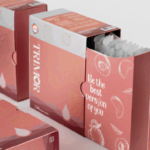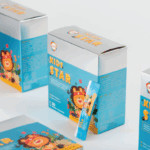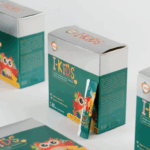Table of Contents
Did you know?
Innovator Mary Sanchez received a patent in 1991 for the one-handed fastening method and variable adjustment of cup size that you see in nursing bras today.
There simply cannot be any experience more gratifying than nursing one’s baby. The bonding, closeness and connection between mum and baby are such blessing only a nursing mum gets to feel. In these modern times however, mums rarely fancy going braless, regardless of the situation, and even nursing mums prefer to have their bras on if they can help it.
Still, nursing mums these days do know one thing, and that is, nothing beats the comfort and support provided by a good nursing bra. These bras are specially-constructed and are often fitted and sold by trained experts. They provide a level of support for nursing breasts that keeps the wearer comfortable at all times and more importantly, during nursing. Read on…
What is a nursing bra?
A nursing bra is a specifically designed bra that provides ready access to the breast for nursing while providing the support needed for fuller, heavier breasts. They are generally made from exceptionally comfortable fabric and have wider shoulder straps for increased comfort. The nursing bra aids breastfeeding by providing flaps or panels that form the bra cup that can be unclipped and folded down or to the side with one hand, exposing the nipple. Most nursing bras also allow the mother to insert breast pads to absorb leaking milk between feedings.
A good nursing bra is designed in such a way it allows a mum to comfortably hold her infant and initiate breastfeeding with ease. When in public, it enables a mother to nurse her infant with minimal effort, minimizing undue gazes. Nursing bras can be worn under a variety of outer garments. There are also special nursing tops available to further assist a mum to breastfeed discreetly and comfortably.
The only similarity between a normal, everyday bra and a nursing bra is that they are both designed for women’s breast support. Lactating breasts however, need much more than just a little lift, and nursing bras are made specially to accommodate all the extra needs of milk-filled breast. Designers and manufacturers go to great lengths to come up with features that will benefit nursing mums and let them nurse in optimum comfort. All these comfort-giving extras, of course, might be reflected in the price-tag of some really good designs.
Yes, nursing bras may generally cost a little more than a normal bra, but when your breast keep spilling out and you need to keep adjusting your straps of your normal bra, you will surely find that you could do with a specially designed one.
What makes them special?
Nursing bras look like regular bras, but the cups can be opened up or pulled aside. The open-up cups may be designed to unsnap, unzip, or unhook from their closure points. One of the main selling features of a nursing bra is in fact the ability for the wearer to open and close the cup quickly and easily while holding her baby with one hand. It’s a most convenient feature, especially when you’re holding your hungry baby close to you.
Here are some tips on how to pick out a perfect nursing bra for your needs.
- For the band size, measure around your body, just under the arms, with a measuring tape. If the measurement is an uneven number, round up to the next even number.
- For the cup size, take a bust measurement, using a measuring tape, around the fullest part of your bust. Be sure the tape is flat against your back and level all around your body.
- Signs of a good fit: the cup covers your breast, and nothing “spills out.” The band is level all the way around, not riding up in back.
- Try them on. This is the only way to be sure that you’ve found a bra with a good fit. Don’t rush the process.
- Choose bras with easy clasp cup openings for no-fuss feeding.
- Shop at a maternity store or boutique that has an experienced bra fitter who will be able to help you make the best choice.
Don’t you just need a bigger bra, then?
Many make the mistake of thinking that they simply need a bigger bra. Yes, that would seem like an easy solution — just size up a cup and add an inch or two of girth. Unfortunately, that doesn’t solve your problem. The fabric may fit around your enlarged breasts, but the design and construction of a fashion bra doesn’t provide the support necessary for a nursing woman.
Fit for comfort
Whichever style you choose, proper fit is the key to comfort. Besides being uncomfortable, a bra that fits poorly may put pressure on your milk ducts, which can cause them to get plugged and lead to inflammation in the breast.
Just the right flexibility
The best nursing bras are comfortable and offer good support but don’t bind breasts in any way that could interfere with milk flow. For optimum support, the band and the straps should be made of non-stretchable fabric. But cups should have some “give” to accommodate your changing breast size at different phases of nursing.
Fitting issues associated with nursing bras
- Back band riding high – One of the most common bra issues for women is that the bra looks and feels comfortable but the back band rides up high. Either the strap has not been properly adjusted or the bra is too big for you.
- Gap in the cup – If your bra cups seem to have a gap, either the band is too loose or the cups are too large. Try tightening the band or going down a cup size.
- Marks left on shoulders – If your shoulders are ‘dented’ with the mark of your bra strap for quite some time after you have removed your bra, it means that your bra is not a good fit for you and hence cannot function well. Tightening the band may help take some extra pressure off the straps. If it’s to no avail, you may need a bigger cup size.
- Overflowing? Not good! – If you find that your breasts are spilling out of the top of your bra or bulge out of the bottom, the cups are too small.
- Armpit boob! – If extra ‘boobs’ seem to spill out at your armpits, it could mean that your cups are probably too small. Cups digging into your skin, whether it creates bulges over them or to the side, indicate a need for a bigger cup size.
- Raised front and centre – The front and centre part of your nursing bra should rest flatly against your chest and not be raised above your skin. If the bra seemed to be raised, the cups may be a tad small, so try a bigger cup size.
- Slipping off and away – Bra straps are not meant to keep slipping off your shoulders, so if they do, it indicates that the band may be too lose or maybe even too large for your frame. Try tightening the bra band or going down a band size.
- Underwire issue – If you’re wearing a bra with underwire, you should not be feeling any discomfort of the wires poking or digging into your skin. The wire should also be flat against your chest. Any shortcomings in this area means the cup size may be too small for you.
Nursing Bra FAQ
Q: How many nursing bras should I own?
A: Ideally, you should have at least three nursing bras at your disposal – One to have, one in the wash and one on standby.
Q: What should I look for in a nursing bra that will help me nurse my baby with ease and comfort?
A: You’ll want to pick out a nursing bra with a convenient one-handed access to the cup closures and also, be certain that the bra is also comfortable to wear and provides the support you need for your heavy breasts.
Q: If my body gets smaller, will I have to purchase new nursing bras?
A: When buying a nursing bra, ensure that the band fits comfortably with the last hook. Hence, when your rib cage decreases in size after birth, you can still use the bra. All you’ll have to do is adjust the band tighter as needed.
Q: How can I tell if a nursing bra I’m trying on is not a good fit for me?
A: The bra should not cause “pinching” under the arm or between the breasts and will not “ride up” in the back. Also, try to feel if there is any tension felt on your shoulders, for if there is, it is not the right fit for you.
Q: Won’t my breast be changing from full with milk to empty? Is there anything in a nursing bra that can help accommodate that?
A: Yes, your breasts will indeed be undergoing constant changes in their sizes as they fill with milk and shrink after each feeding. A nursing bra made from at least 5% spandex can help accommodate these changes.



